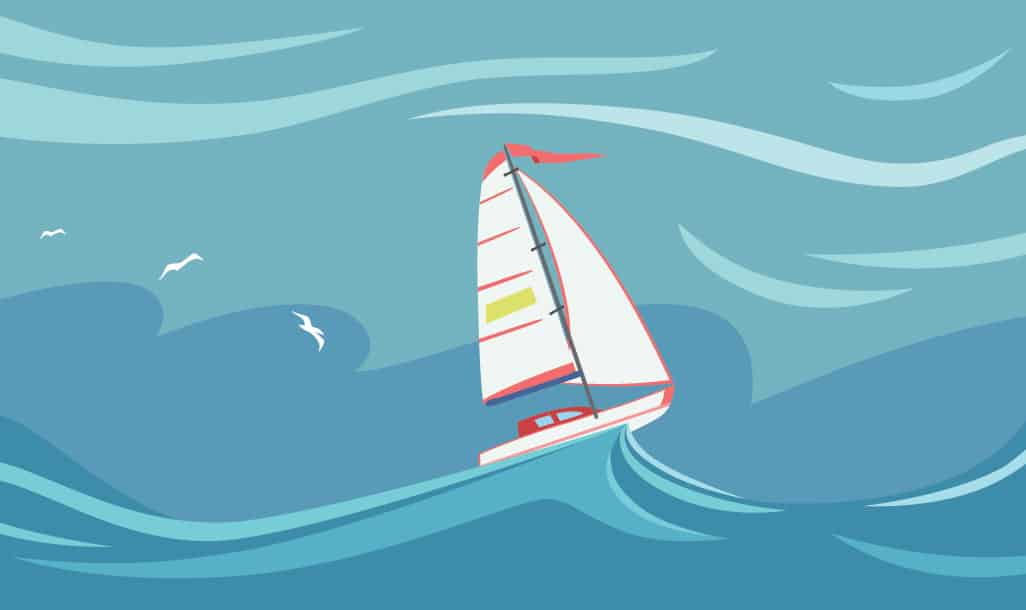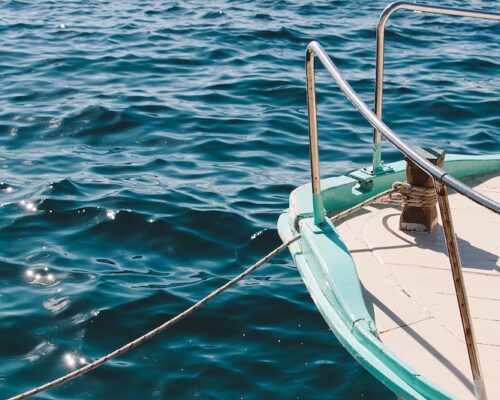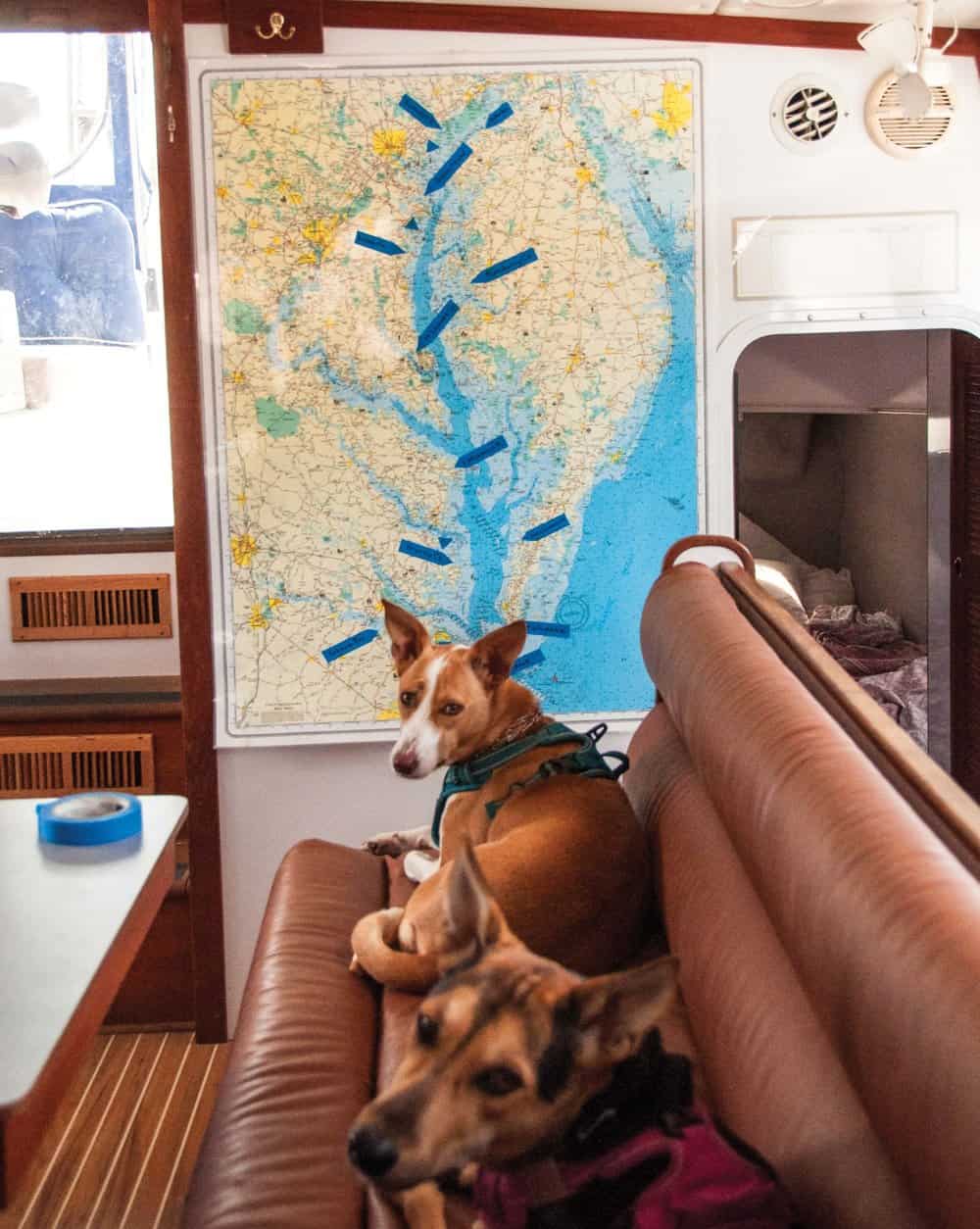Go! Stay! Anchor! Eat? Let’s talk!
Let’s talk about some of the issues facing us for the first time in our lives as we head out on the water in a pandemic. Next week, which is to say the third week of May, I will pull out of St. Petersburg, Florida (yes, that state!) and head down the Gulf Coast to Fort Myers, then cross the state on the Okeechobee Waterway before turning north at Stuart for the 1,500-mile trek up the ICW to the Chesapeake Bay and then another hundred to my slip in Annapolis. The whole shebang should take me about a month. Perhaps you will be reading this just as I arrive. I have made the trip many fingers on both hands-worth, but this time, with the pandemic, it’s going to be very different experience. This time, in addition to my usual goals of pointing consistently in the right direction and not running aground, I must add the crucial goal of neither spreading nor contracting the virus. It’s not a goal to be taken lightly, and like many other snowbirds who have found themselves in the same position, I’ve given it a lot of thought over the past two months of lockdown.
All of which brings me to the crux of the matter: Can we cruise, fish, trailer, sail, paddle responsibly under the circumstances? Sure, we all want to get out on the water this summer, but many of us are understandably wary of jumping back into the life we recently left. With that in mind, here are five points of consideration. I’m sure many of you have wrestled with these already and come up with some answers of your own. Send me a line at [email protected]. Let’s discuss. We are all on uncertain ground here.
1. Staying out
I’ll begin with boating’s unique strength: Our ability to get away, and stay away, from everybody else. In other words, the more we can stay away from the dock, the less chance we have of getting ourselves or others into trouble.
For me, that’s going to mean not coming into a marina each night. As much as possible this trip, I plan to come into a marina only for fuel, a pump-out, and water, preferably all at one time. For those of you with 500-gallon fuel tanks and two heads, you will probably be able to go weeks without touching land other your own slip. Lovely. I can’t do that. I will spare you all the numbers, but the upshot is that I will have to come in for fuel, pump-out, and water about once a week, if I add four 5-gallon jerry cans. When I do, without fail I will wear a mask and gloves. It’s a small thing, and I will do it, if for no other reason, than as a sign of respect for those who are putting themselves at risk for my benefit. Boy, they are going to hate the part where I fill all those little jugs, though! Sorry people, it’s for your own good.
2. Coming in
Staying out is absolutely the safest thing we can all do while boating, but at the same time, we don’t want to risk life and limb just to avoid docking. There are places along the ICW and on the Chesapeake where the safest place to be during a blow is in a slip. And this means additional contact. But the good news is that by now, most marinas that accept transients have given this distancing thing a lot of thought. Dockhands may be there to catch your lines, but they will likely be the only contact you’ll need to have. Wearing a mask and gloves while docking makes everyone safer. (So would a soundproof-chamber for my fur-bearing crew, Sammy and Bindi, but we won’t go there.) Later, as we walk off the docks and then around the marina and into town, a mask can be an additional precaution in case of narrow docks and crowds, but social distancing (one adult alligator or a dozen jumbo crabs’ worth) is essential. So, come into a marina when you need to, but do it with care and respect for everyone.
3. Running out of milk
As chance would have it, I subscribed to a grocery delivery service last year when I was up the St. Johns River in Sanford, Florida for several weeks and couldn’t get to a grocery store without using Uber or Lyft. I figured out that the subscription cost for a year’s free delivery of groceries in cities and good-sized towns along the Eastern seaboard would quickly be a better deal than a few Uber rides. Since this service often includes a Target, office supply, and ABC stores, I could get a lot more than milk delivered right to the marina. With the pandemic, it has more than paid for itself again. Many of you have doubtless been making use of similar methods at home, though as many of you also have no-doubt considered, the paradox of this is that we put the shopping/delivery people in harm’s way instead of ourselves. Still, from the standpoint of a number of persons contacted if all of us go shopping versus a lesser number of shoppers, it is arguably a rational trade-off. Sorry, got side-tracked there. The idea is to bring enough food along with you from home so you don’t have to resort to any shopping at all once you set out for the day, weekend, or week. When I’m cruising this year, I will consider it my duty to eat through that six cans of black beans and fourteen kinds of strangely shaped pasta I have collected in the pantry instead of shopping in person or by professional representative.
4. Running up against the steamed-crabs paradox
Now we get to the toughest call: What about a delicious dinner at that great little restaurant you ate on last summer’s cruise? Oh, this one is so hard! On the one hand, you are doing everything you can to stay safe and keep everyone else safe (see Nos. 1, 2 and 3 above), but on the other hand, you have docked in St. Michaels because of, er, weather (oh, yes, I know that’s where you’re going!) and there’s this great little restaurant up the block that desperately needs the business and you’re sick to death of black beans. I know, I’ve been to St. Michaels too, and I know the one you’re talking about. Arguably, curbside pickup or restaurant delivery lets you have your pizza and eat it too. And it supports small local business. And eating outside at well-spaced tables may provide a measure of safety.
I will tell you this, though: I intend to make the trip up the ICW and the Chesapeake this year without stopping at any of my 35 all-time favorite restaurants along the way. I haven’t even tried fusilli a la black beans yet. I will however succumb to a maximum of one local pizza delivered to the boat from somewhere yet to be decided. My favorite restaurants have years of my past support and the promise of years of future patronage, but I’m not ready to eat in yet, even with the promise of eight pepperoni pizza’s worth of distancing. Still, a dozen or so steamed crabs at a marina picnic table under the shade of a maple tree seems like a bullet-proof choice.
5. Weighing it all in the balance
So, can we go boating now? Absolutely! Get out on the water with your family. Feel the wind in your face. Sail. Fish. Paddle. Idle up a quiet creek. Drop anchor. Jump in the water. Pull a cold beer out of the cooler. Everything else will seem unimportant. Yes, I know that my trip back to the Bay is going to feel strange, a bit alienating and perhaps a little bit lonely. But on the other hand, you and I on our separate boats will have plenty of time to concentrate on why we do this in the first place. At the end of the day, we’ll all watch the sun drop behind a wall of pines or oaks or a distant city and fall asleep to the sound of the water slapping lightly against the hull. Sometime during the night, we’ll feel the boat swing to the tide, and the things we miss—friends, raft-ups, busy restaurants—will all be there next year.




